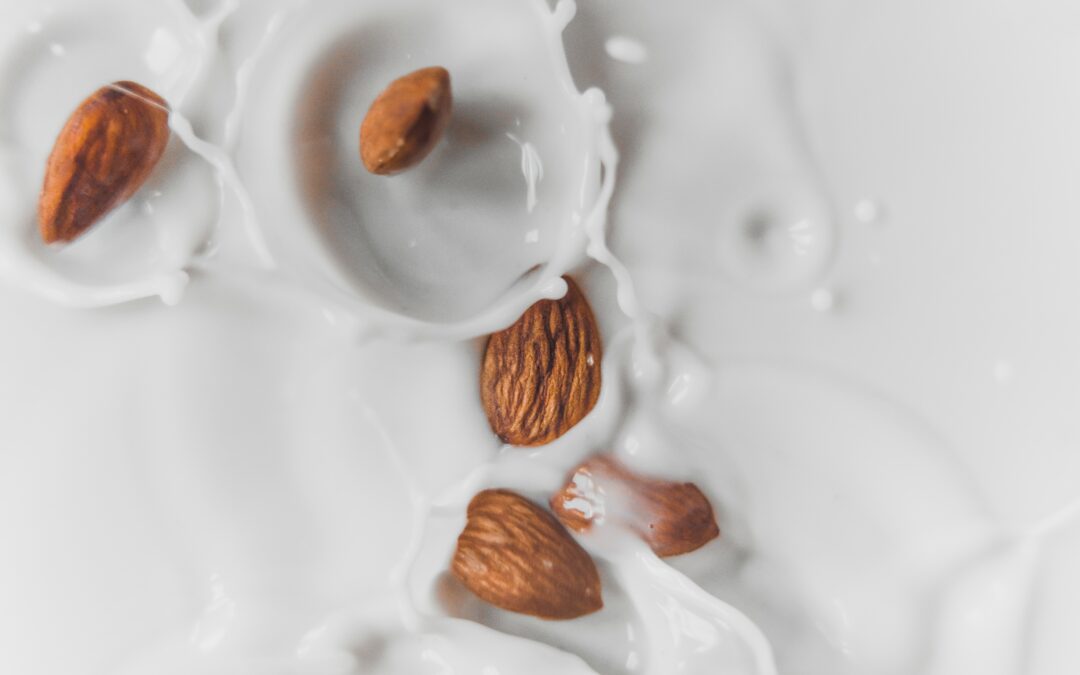Dairy, in its purest form (think milk, cheese, plain yogurt) is a Real Food. Unless someone has a diagnosed dairy allergy or lactose intolerance (symptoms being abdominal cramping, diarrhea, and gas after dairy ingestion), there is no contraindication to consuming it. Yet I get the question often from families: “should we cut out dairy? What if we try an alternative milk?” This question comes from a variety of families whose kids have conditions varying from functional abdominal pain to celiac disease, to families with kids who have metabolic syndrome. The food industry has jumped on the trend of marketing alternative milks and muddying the messaging of dairy; ‘is it healthy or not?’ ‘What happened to the milk mustache?’ ‘Don’t kids need to drink some kind of milk every day for proper nutrition?’
The good news is: we don’t need it. If your kid eats solid food– Real Food– their calcium and protein requirements are likely being met. It’s ok to ditch the white liquid for plain water. Decades of ‘Got Milk?’ and parents telling their kids to ‘drink your milk!’ and the explosion of alternative milk options and advertising want one thing: to get you to buy the stuff and make you think it is a healthy and necessary food. Milk is on the food pyramid and in the glass next to MyPlate. The Food and Drug Administration who created these guidelines is lobbied by the food industry, not by scientists or objective physicians or dietitians.
Alternative milk is not inherently healthier than plain milk. In fact, we believe that most alternative milks on the market contain so many emulsifiers, added sugars, gums, and seed oils that they should have no place in your refrigerator. These are not Real Foods. The unfortunate reality is that virtually all alternative milks on the market contain additives that we would not consider ingredients. We would not purposefully choose to ingest them. If ingredients contain things that don’t belong in a pantry, don’t eat them.
Ingredients list from a popular almond milk:
ALMOND MILK (FILTERED WATER, ALMONDS), CALCIUM CARBONATE, SEA SALT, POTASSIUM CITRATE, SUNFLOWER LECITHIN, GELLAN GUM, NATURAL FLAVORS, D-ALPHA-TOCOPHEROL (NATURAL VITAMIN E).
Ingredients list for a popular pea protein milk:
WATER, PEA PROTEIN BLEND (WATER, PEA PROTEIN), CANE SUGAR, SUNFLOWER OIL, CONTAINS LESS THAN 1% OF VITAMIN B12, VITAMIN D2, RIBOFLAVIN, VITAMIN A PALMITATE, SUNFLOWER LECITHIN, TRICALCIUM PHOSPHATE, DIPOTASSIUM PHOSPHATE, MIXED TOCOPHEROLS (TO PRESERVE FRESHNESS), MAGNESIUM CITRATE, SEA SALT, NATURAL FLAVOR, GUAR GUM, GELLAN GUM.
Three bright spots: 1.) If you thought dairy was inherently bad for you, it’s not! Go for it. Just watch out for things like yogurt with heaps of added sugar. Go for full-fat. 2.) we don’t NEED to have any white liquids on the table to ensure proper nutrition. Just Eat Real Food. 3.) nut/seed milks can be made at home. You might sacrifice some flavor/texture/creaminess that the food industry created in a laboratory when using only nuts/seeds and water, but it is Real Food.
Listed below are recipes for homemade alternative milks. I want to reiterate that children do not need to drink anything beyond water, but dairy and Real Food alternative milks with ingredients you recognize and would keep in your kitchen are ok. We just want you to ditch the sugar and additives. The recipes are intended to provide options. Use the milks within 1 week.
Hemp seed milk (hemp is a complete protein)
¼ cup hemp seeds: 2 cups of water
No soaking required. Combine in blender and blend on high for at least 30 seconds and up to 2 minutes depending on the strength and speed of your blender.
Almond milk
½ cup almonds soaked overnight, then rinsed: 2 cups of water
Soak overnight in a bowl of water. Then rinse and add fresh water to the blender with the soaked almonds. Blend for 30-60 seconds. Strain through a nut milk bag, cheesecloth, or a very fine sieve.
*Reserve the pulp for baking (can be used to make crackers, desserts. The pulp can be dehydrated and blended into almond flour. It can be frozen and used later).
Coconut oat milk: I just use this recipe!

